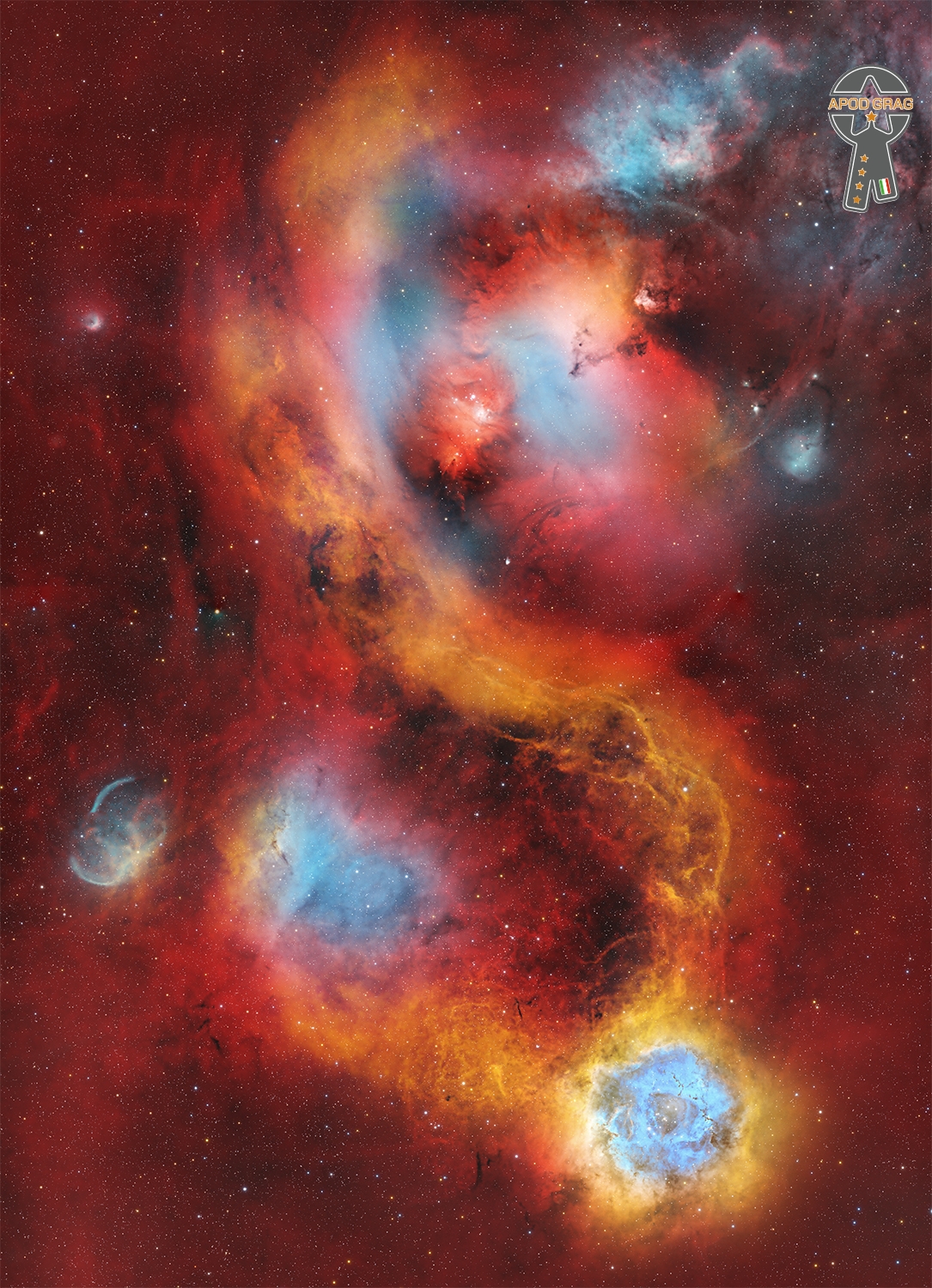Cosmo Monoceros Region
The constellation of Monoceros (which means “unicorn” in Greek) is located in the northern sky, near other constellations such as Orion and Canis Major. This region is especially known for containing several bright nebulae, such as the Rosette Nebula and the Christmas Tree Nebula, as well as other interesting star formations.
1. The Rosette Nebula The Rosette Nebula (NGC 2237-2246) is a large emission nebula located in the constellation of Monoceros, about 4,500 light-years from Earth. It is one of the most famous and studied nebulae due to its impressive spiral shape, which resembles a rose (hence its name). This nebula is a huge reservoir of gas and dust, where new stars are born.
Characteristics: The nebula has a diameter of about 130 light-years. At its center is the star cluster NGC 2244, composed of hot, young stars that have ionized the surrounding gas, creating the bright glow that makes it visible. The nebula is filled with dense gas and dust, which are actively forming new stars.
2. The Christmas Tree Nebula The Christmas Tree Nebula (also known as NGC 2264) is a star-forming region located near the Rosette Nebula, in the constellation of Monoceros. It is located about 2,700 light-years from Earth and is famous for its appearance, with a structure of gas and dust resembling a Christmas tree.
Characteristics: This nebula is a region of active star formation. The star cluster NGC 2264, within the nebula, is composed of young stars, some of which are in the early stages of star formation. The structure, which resembles a Christmas tree, is a formation of gas and dust illuminated by radiation from newly formed stars.
3. Supernova Remnant (SNR G206.0+0.3) Monoceros also contains a supernova remnant known as SNR G206.0+0.3. This remnant is what remains after a supernova explosion, where a massive star has exploded, releasing enormous amounts of energy and material into space.
